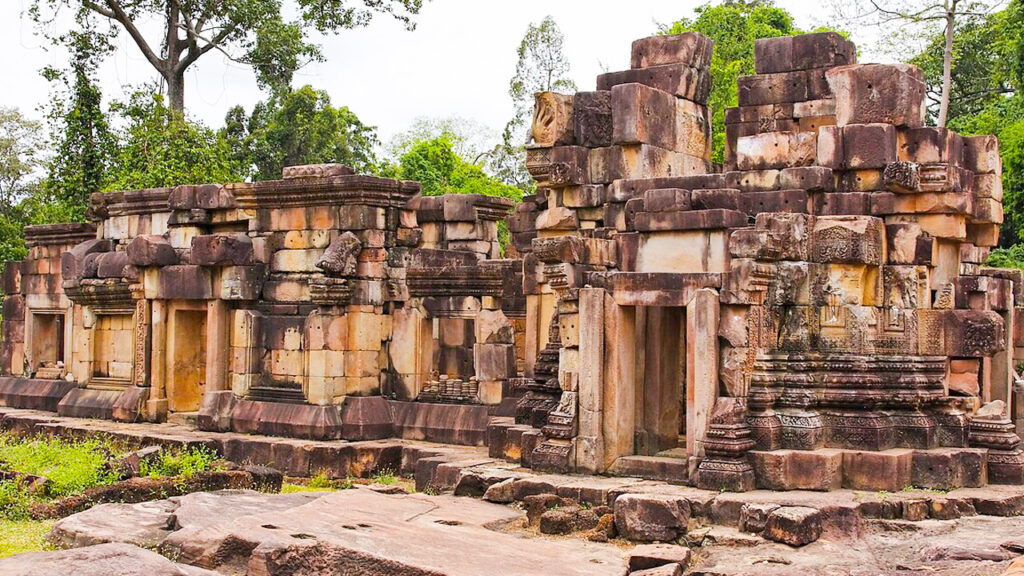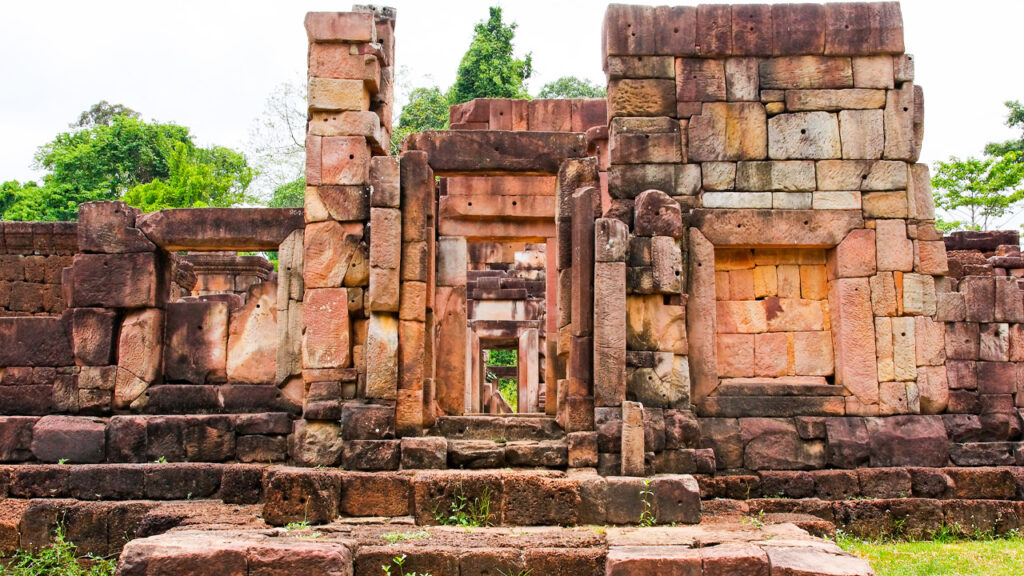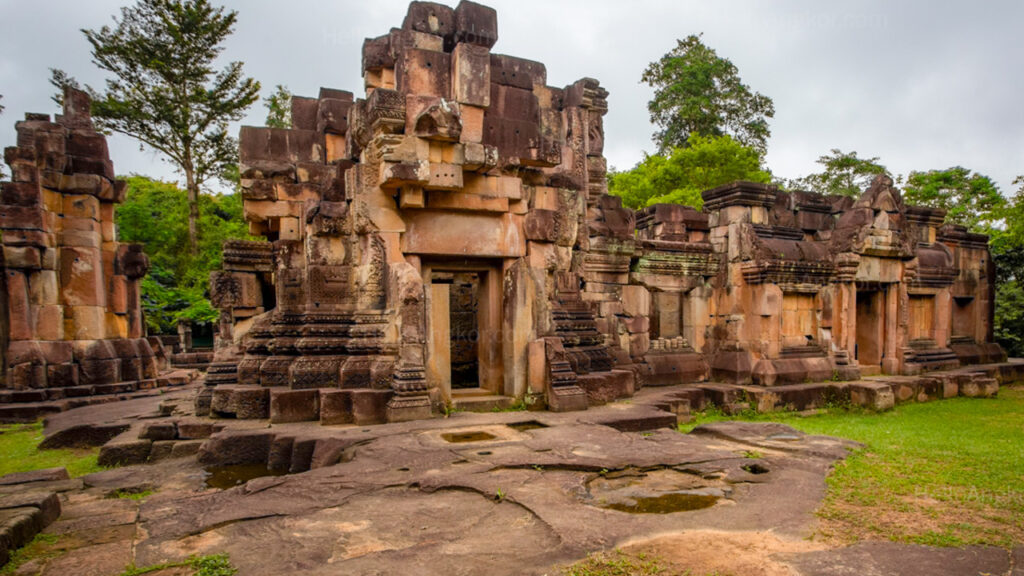The temple of Ta Moan was built in the 11th century during the reigns of King Suryavarman I (1002-1050) and King Udayadityavarman II (1050-1066).
The architecture and decorations of the temple’s halls and courtyards indicate that it was in the Khleang and Baphuon style and dedicated to Lord Shiva .
In this temple, there is a pillar of Lord Shiva, called the “Svayambhuva Linga”, which means the linga arises spontaneously.
The “Svayambhuva Linga” is a very special place for ancient times, and Cambodians still believe in it to this day.

his temple site was a pre-Angkor era monastery , according to inscriptions from the reign of King Suryavarman I.
Another interesting thing is that they did not level the ground for construction, they built directly on the mountain rock by just leveling it and probably took the stones there to build the temple.
As for the statues, we have not seen anything except for one room with a natural statue. This is a piece of stone that has grown straight up, which the ancient Khmer considered to be a linga .
Please note that there are two types of linga. The linga that is carved by people and can be moved to another place, which is usually placed in the vagina, is called “sthabit linga”.
The stone that is attached to the ground and has a shape that can be considered a linga is called “swatobho linga”, meaning a linga that arises spontaneously.
The veneration of the two lingas is the same, but the linga itself here is connected to the outside of the temple compound through a stone groove or a water spout,
” Som Sutra “, which is prepared for the water used in the linga ritual, and flows out for the devotees to use in their respective faiths.

Ta Moan Temple is located in Kou Village, Ampil Commune, Banteay Ampil District, Oddar Meanchey Province, on National Road No. 56, 48 kilometers from Samrong City.
The distance from Ta Moan Thom Temple to Ta Moan Toch Temple is nearly 2 kilometers . Ta Moan Thom Temple is 60m x 60m, built of sandstone, on the back of Dang Rek Mountain.
This temple has been registered as a heritage site by the Ministry of Culture and Fine Arts. According to the assessment of archaeologists, the architecture of the temple has been built,
but in terms of sculpture, we see that there are many areas of the temple that have not been carved. In addition, Ta Moan Temple has a wall surrounding it facing south,
which is why we wonder why? This is according to the necessary requirements of the geographical location, which is a plateau, this point faces south.
The entire temple is built to be attached to the ground.
Those who have studied ancient Khmer architecture and art can and do agree that this temple is the handiwork of King Suryavarman I,
if not from that era or reign (the first part of the 11th century), even though there are no inscriptions and no sculptures.
According to some sources, the temple of Ta Moan was built in the 11th century during the reign of King Suryavarman I (1002-1050) and King Udayadityavarman II (1050-1066).
The architecture and decorations of the temple’s halls and courtyards indicate that it was in the Khleang and Baphuon style and dedicated to Lord Shiva. In this temple,
there is a pillar of Lord Shiva, called the “Svayambhuva Linga”, which means the linga arises spontaneously. The “Svayambhuva Linga” is a very special place for ancient times,
and Cambodians still believe in it to this day.

Another interesting thing is that they did not level the ground for construction, they built directly on the mountain rock by just leveling it,
and probably took the stones there to build the temple. As for the statues, we have not seen anything except for one room with a natural statue.
This is a stone that has grown straight up, which the ancient Khmer considered to be a linga. Please note that there are two types of linga.
The linga that is carved by people and can be moved to another place, which is usually placed in the vagina, is called “sthabit linga”.
The stone that is attached to the ground and has a shape that can be considered a linga is called “swatbhuv linga”, meaning a linga that arises spontaneously.
The veneration of the two lingas is the same, but the linga itself here is connected to the outside of the temple compound through a stone groove or a water spout,
“Som Sutra”, which is prepared for the water used in the linga ritual, and flows out for the devotees to use in their respective faiths.


